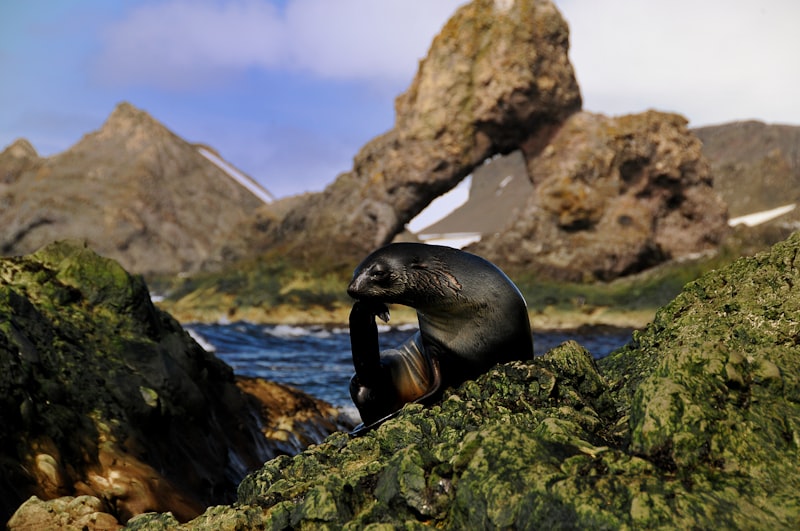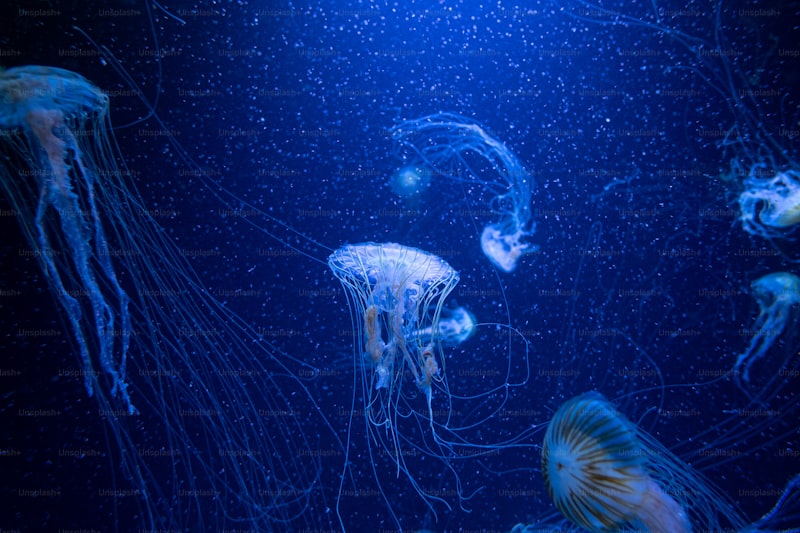Have you ever wondered how marine creatures communicate and interact with each other beneath the ocean’s surface? It’s not just through sounds or movements; chemicals play a pivotal role too. This field of study, known as chemical ecology, explores how marine organisms use chemical signals to navigate their environments, find food, defend against predators, and even choose their mates.
Picture this: in the vast expanse of the ocean, where visibility is limited, marine organisms have evolved intricate chemical languages. These languages are composed of molecules that convey specific messages to other organisms nearby. For instance, a coral reef fish might release a chemical into the water to alert others of danger, while certain algae emit chemicals that attract herbivores that feed on them.
One of the most mesmerizing aspects of chemical ecology is the diversity of strategies employed by marine organisms. Take the relationship between sea anemones and clownfish, made famous by the movie “Finding Nemo.” The clownfish develop a protective layer of mucus that renders them immune to the sea anemone’s stinging tentacles. In return, the clownfish defend the anemone from predators and provide nutrients through their waste. This mutualistic relationship is facilitated and maintained through chemical cues exchanged between the two species.
But it’s not all about cooperation; competition also drives the chemical interactions among marine organisms. Some species produce toxins that deter competitors from encroaching on their territory or feeding grounds. Others release chemicals that inhibit the growth of neighboring organisms, securing their own survival and dominance in their ecological niche.
From coral reefs to the deepest trenches, every corner of the ocean pulses with chemical signals that shape the dynamics of marine ecosystems. Scientists are continually unraveling these mysteries, discovering new species-specific chemicals and decoding the intricate web of interactions that govern life underwater.
Next time you dip into the ocean or marvel at a marine documentary, remember that what you see is just the surface of a complex world where chemical whispers decide the fate of countless organisms.
Unveiling Nature’s Alchemy: The Intricate Chemical Signals of Marine Life
In this aqueous realm, organisms such as corals, algae, and fish employ a symphony of biochemical cues to navigate their environment and interact with each other. For instance, coral reefs emit chemical signals that attract specific fish species while deterring others, ensuring a delicate balance of biodiversity. These signals are so nuanced that they can even indicate the presence of potential mates or warn of nearby danger, much like aromatic notes drifting through the sea.
The chemistry of marine life extends beyond communication to adaptation and survival. Deep-sea creatures, living under extreme pressure and darkness, have evolved unique biochemical strategies to thrive in their harsh environment. Some produce bioluminescent compounds that light up the abyssal depths, while others utilize potent toxins for defense against predators.
Analogous to the alchemical processes of transformation, these chemical signals are fundamental to the ecological harmony of marine ecosystems. They underline the interconnectedness of species and underline the importance of conservation efforts aimed at preserving these delicate balances.
The study of nature’s alchemy in marine life opens windows into understanding the profound ways in which organisms interact through chemical signals. It invites us to marvel at the complexity of life beneath the waves, where every molecule tells a story of adaptation, survival, and interconnectedness.
From Sea to Lab: How Chemical Ecology Reveals Hidden Marine Communication
Imagine a bustling metropolis beneath the waves, where every organism, from tiny plankton to majestic whales, communicates through a delicate balance of chemical messages. These signals convey vital information about food sources, mates, predators, and even territorial boundaries. Much like a city’s bustling streets, the ocean teems with these invisible conversations, orchestrating the intricate web of life.
At the heart of chemical ecology lies the process of chemical signaling, where organisms release molecules into their surroundings. These molecules, often volatile and specific in their composition, act as messengers that travel through water currents, reaching distant recipients. It’s akin to sending a handwritten letter across the ocean—a message encoded in molecular form, deciphered only by those equipped with the right receptors.
Scientists, drawn by the mysteries of marine communication, delve into this realm using sophisticated tools and techniques. They study how these chemical signals evolve, how organisms perceive and respond to them, and how environmental changes impact these intricate dialogues. In laboratories worldwide, researchers recreate these underwater conversations, seeking insights into biodiversity, ecological health, and potential applications in biotechnology and pharmaceuticals.
Moreover, chemical ecology isn’t just about decoding secrets; it’s about marveling at nature’s ingenuity. It highlights the adaptability of marine life, showcasing how even the smallest organisms orchestrate their survival strategies through molecular whispers. As we uncover more about this hidden realm, we gain a deeper appreciation for the interconnectedness of life in the oceans—a symphony of scents and signals, woven into the fabric of marine existence.
Symbiotic Secrets: How Marine Organisms Use Chemicals to Communicate and Coexist
Picture this: a coral reef bustling with life. Within this vibrant ecosystem, corals and algae engage in a delicate dance of mutual benefit. Corals provide shelter and nutrients to algae, while algae in turn provide corals with essential energy through photosynthesis. This partnership is not just a mere coexistence – it’s a finely tuned symphony where chemical signals orchestrate every move.
Take another example from the depths: the humble sea anemone and its resident clownfish. Beyond their striking appearance, these two creatures exemplify a symbiotic relationship built on chemical cues. The anemone’s tentacles offer protection to the clownfish from predators, while the clownfish, in return, cleans and defends its host. Through a complex interplay of chemicals, they communicate and ensure mutual survival.

Even in the vast expanse of the open ocean, communication through chemicals is ubiquitous. From fish releasing alarm pheromones to warn others of danger, to shrimp forming cleaning stations where they meticulously groom other marine animals in exchange for food scraps, every interaction is governed by a subtle language of chemicals.
What’s truly astonishing is the diversity and specificity of these chemical signals. Each species has its own unique vocabulary, finely tuned over millennia of evolution. Analogous to our human languages, these chemical conversations convey intricate messages of cooperation, competition, and survival strategies.
The Language of the Deep: Decoding Chemical Dialogues Among Oceanic Species
Have you ever wondered how marine creatures communicate in the vast depths of the ocean? The language of the deep is a fascinating realm where chemical signals play a crucial role in species interaction. Oceanic species, from tiny plankton to majestic whales, engage in intricate chemical dialogues that shape their behaviors and interactions.
In the oceanic ecosystem, chemical signals act as the primary mode of communication, surpassing visual and auditory cues due to the limited visibility and sound propagation underwater. These signals, often imperceptible to human senses, carry rich information about food sources, mating opportunities, and even danger alerts.
For example, when a predator approaches, certain species of fish release alarm pheromones into the water. These chemicals signal nearby fish to flee, helping them evade potential threats. Similarly, during mating seasons, marine organisms release specific pheromones that attract potential mates over long distances, ensuring reproductive success in the vastness of the ocean.

The complexity of chemical communication extends beyond simple alerts and attractions. Some marine organisms use chemical signals to establish territories or assert dominance. Crustaceans, such as lobsters, release urine-based signals that indicate their dominance status to rivals, preventing unnecessary conflicts and conserving energy in the harsh underwater environment.
Moreover, symbiotic relationships in the ocean often rely on chemical exchanges. Coral reefs, for instance, host a diverse community of organisms that communicate through chemical cues to maintain their delicate balance. Coral polyps release chemical signals that attract symbiotic algae, which provide them with essential nutrients through photosynthesis.
Understanding the language of the deep is not only crucial for unraveling the mysteries of marine life but also for conservation efforts. Researchers study these chemical dialogues to assess ecosystem health, monitor pollution impacts, and devise strategies for marine conservation.
The oceanic realm is alive with chemical conversations that shape the behavior, survival, and evolution of its inhabitants. By delving into the intricacies of these chemical dialogues, scientists continue to unveil the secrets of the deep sea and pave the way for informed conservation practices.
Defense Mechanisms Unveiled: How Marine Organisms Employ Chemical Warfare
Ever wondered how marine creatures survive in the wild waters, constantly under threat from predators? One of the most fascinating strategies they employ is chemical warfare, a sophisticated defense mechanism used to deter enemies and ensure survival.
Imagine a coral reef bustling with life—a vibrant underwater city teeming with colorful fish, delicate corals, and intricate marine plants. Beneath this apparent tranquility, however, lies a battlefield where organisms battle for territory and survival. Here, chemical warfare plays a crucial role.
In this underwater arms race, marine organisms have evolved to produce and release potent chemicals. These chemicals serve multiple purposes: some act as deterrents to ward off predators, while others serve as signals to communicate within their species. The diversity and complexity of these chemical defenses are staggering, each tailored to specific threats and environmental conditions.
Take the example of the crown-of-thorns starfish, a notorious coral predator. When threatened or attacked, it releases toxins through its skin, creating a barrier that deters predators and even harms nearby coral competitors. This chemical arsenal not only protects the starfish but also helps it assert dominance in its ecosystem.
Similarly, certain species of algae and sponges produce chemicals that inhibit the growth of nearby organisms, effectively creating space and resources for themselves. This chemical warfare isn’t just about defense—it’s also about competition and survival of the fittest in the marine world.
The brilliance of these defense mechanisms lies in their adaptability and specificity. Each organism produces a unique cocktail of chemicals, finely tuned over generations of evolution to maximize effectiveness while minimizing energy expenditure. It’s a testament to the ingenuity of nature and the relentless drive for survival inherent in all living beings.
As researchers delve deeper into the complexities of marine chemical warfare, they uncover new insights into how these strategies could inspire medical advancements or eco-friendly pest management solutions. The ocean, once thought of as a silent and serene realm, reveals itself as a dynamic battlefield where chemical signals shape the balance of life.
Frequently Asked Questions
How do marine organisms use chemicals for communication?
Learn how marine organisms utilize chemicals for communication, exploring the fascinating ways in which they signal and interact in their underwater environment.
What are the ecological implications of chemical signaling in marine ecosystems?
Discover how chemical signaling influences marine ecosystems and its ecological implications.
What is chemical ecology in the context of marine organisms?
Chemical ecology in marine organisms studies how chemicals produced by organisms influence interactions such as defense, predation, and communication. It explores the role of chemical signals in shaping marine ecosystems.
How do researchers study chemical interactions among marine organisms?
Learn how researchers study chemical interactions among marine organisms, exploring methods like chemical analysis, laboratory experiments, and field observations. Discover how these studies help understand ecological relationships and potential applications in marine science.
What are some examples of chemical defenses in marine species?
Explore examples of chemical defenses in marine species, where organisms use toxins or deterrent compounds to ward off predators. Discover how these adaptations enhance survival in challenging marine environments.


